What Tea Can Be
With the acquisition and integration of Teavana, Starbucks makes its biggest play to bring an elevated experience of tea to the world
Behind the elegant wooden counter, a wall of cylindrical tins rises to the ceiling in tidy vertical regiments of white, green, black, blue, purple, orange and red, like a color-coded apothecary shop.
Each contains a different mystery, an aroma, texture and hue as intriguing as the name of the product inside. The baby-powder jade of Imperial Matcha. The earthen rumples of Monkey Picked Oolong. The heady spices of Maharaja Chai. The grassy blades of Gyokuro Imperial. The tightly rolled nuggets of Black Dragon Pearl. The fruited potpourri of Pineapple Kona Pop. The gilded fronds of Silver Needle. And maybe 100 more unique expressions of leaf and bud, herb and fruit.
Infused in hot water, they produce a kind of alchemy—rich, distinctive flavors sought the world over for comfort, invigoration, goodness in a cup.
This is tea as it is meant to be. This is Teavana.
It’s also Starbucks. With its latest and largest acquisition, the Seattle company renowned for bringing a heightened coffee experience to consumers around the globe is looking to do much the same with tea.
“Teavana is in its infancy, and the $125 billion tea market is ripe for reinvention and innovation,” says Annie Young-Scrivner (BA 1990), the Starbucks executive vice president who has led the initial integration and innovation of Teavana. “We are well-positioned to take advantage of that growth, reimagining the tea experience in the United States and, over time, around the globe.”
Why tea?
When she got the call to lead Teavana early last year, Young-Scrivner was, likewise, well-positioned to catalyze its transformation into a global brand within a global brand. She came to Starbucks in 2009 after a sterling 20-year career at PepsiCo, where she led a number of its international businesses. At Starbucks she served as the company’s first global chief marketing officer, as president of Tazo Tea and as president of Starbucks Canada before taking on Teavana.
She loves tea.
“Growing up in a Chinese household, tea was everywhere,” says Young-Scrivner, who emigrated from Taiwan to Seattle when she was seven. “We drank it, cooked with it, used it as medicine. I truly believe in the magic of tea to naturally improve the lives of everyone in the world, in more flavors and in more ways imaginable.”
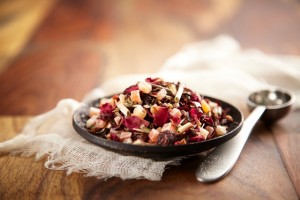 In this sentiment, she is hardly alone. Since a few legendary leaves of a Camelia sinensis tree first blew into a Chinese emperor’s boiling drinking water nearly 5,000 years ago, tea has become a treasured staple of cultures around the world, from China and Japan to the Middle East and North Africa, from India to Europe and, of course, the United Kingdom. Though the United States lacks a discernable tea tradition (perhaps a legacy of that famous patriotic act of civil disobedience in Boston Harbor back in 1773), Americans do, in fact, drink 800 million cups each week.
In this sentiment, she is hardly alone. Since a few legendary leaves of a Camelia sinensis tree first blew into a Chinese emperor’s boiling drinking water nearly 5,000 years ago, tea has become a treasured staple of cultures around the world, from China and Japan to the Middle East and North Africa, from India to Europe and, of course, the United Kingdom. Though the United States lacks a discernable tea tradition (perhaps a legacy of that famous patriotic act of civil disobedience in Boston Harbor back in 1773), Americans do, in fact, drink 800 million cups each week.
As a global market, tea is nearly boundless. The only beverage more consumed is water. And tea is gaining.
But potential alone isn’t what makes tea a good fit with Starbucks. It’s the complementary relationship between tea and coffee. Young-Scrivner says that the two fulfill different consumer “need states” and different “day parts.” In other words, the same people tend toward one beverage or the other at different times of day and for different reasons. Coffee to perk up (maybe in the morning or early afternoon), tea to calm down (late afternoon, say, and evening). For Starbucks, tea represents an opportunity to build a distinct brand in a category that isn’t coffee, and a way of increasing capacity in every store.
Why Teavana?
 Of course, none of this is news to Starbucks. “We were founded as Starbucks Coffee, Tea and Spices,” reminds Young-Scrivner. “We’ve always been fascinated by tea.”
Of course, none of this is news to Starbucks. “We were founded as Starbucks Coffee, Tea and Spices,” reminds Young-Scrivner. “We’ve always been fascinated by tea.”
From its first day in business—Seattle’s Pike Place Market, 1971—Starbucks has served this alternative to coffee. Its 1999 purchase of Portland-based Tazo added a discernible line and more varieties of tea. But the 2012 acquisition of Teavana was a game changer, immediately elevating Starbucks to the upmost echelon of the tea industry.
Founded in Atlanta in 1997, Teavana has grown to more than 300 specialty retail stores located primarily in upscale shopping malls across the US and Canada. These compact emporiums sell a curated line of tea pots and accessories, made-to-order hot and cold beverages, and loose-leaf teas of the highest grade—a product that hardly resembles the sacks of desiccated filings that sometimes pass for tea.
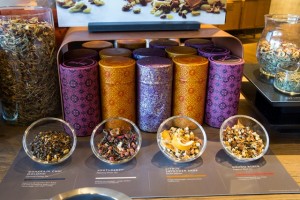 As Starbucks does with beans, Teavana sources only super premium tea leaves to be processed into the purest varieties of white, green, oolong and black teas, as well as endlessly creative herbal blends. “The acquisition of Teavana has given us tremendous expertise in tea—both a mastery of 5,000 years of tradition and these youthful epicurean blends that are so provocative in taste and profile,” says Young-Scrivner. “Plus, a national footprint in tea.”
As Starbucks does with beans, Teavana sources only super premium tea leaves to be processed into the purest varieties of white, green, oolong and black teas, as well as endlessly creative herbal blends. “The acquisition of Teavana has given us tremendous expertise in tea—both a mastery of 5,000 years of tradition and these youthful epicurean blends that are so provocative in taste and profile,” says Young-Scrivner. “Plus, a national footprint in tea.”
On the other half of the equation, Starbucks brings a global supply chain, a wealth of digital assets, and deep expertise in branding in retail design. Plus, an international footprint of more than 22,000 stores across nearly 70 countries.
Through Teavana, Starbucks intends to make tea the biggest thing since, well, coffee.
The big infusion
First, the matter of integrating companies. Starbucks has plenty of experience, having previously acquired Tazo (tea) in 1999, Ethos (bottled water) in 2005, Evolution Fresh (juice) in 2011, and La Boulange (baked goods) in 2012.
But Teavana is the biggest, and perhaps the most essential to the company’s long-term growth. So respecting and protecting Teavana’s culture and heritage—so integral to its customer experience—has been of the utmost importance.
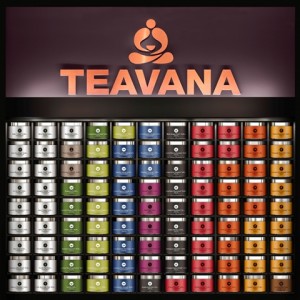 Beyond Young-Scrivner, two other Huskies have played a central role in this delicate integration.
Beyond Young-Scrivner, two other Huskies have played a central role in this delicate integration.
On the quantitative side, Robert Herring (BA 1992) leads Teavana’s finance, accounting and business analytics departments. In addition to transporting finances and accounting into the Starbucks system, his team generates the financial intelligence that informs big-picture strategy.
“It takes a lot of knowledge about the structures of both organizations to do a successful integration,” Herring says. “And we need to stay nimble, and be able to execute changes quickly.”
On the qualitative side, Anna Hawk (BA 1990, economics) heads Teavana’s human resources department. A veteran of several integrations in her 23 years at Starbucks, Hawk’s team is responsible for helping to integrate several thousand Teavana partners (employees) into the Starbucks systems.
At a personal level, she says it’s a critical piece of the integration. “We take extraordinary care with our new partners as we bring them into the Starbucks family,” Hawk says. “It goes back to what (chairman and CEO) Howard Schultz has always believed: if you take care of your partners, they will take care of your customers.”
Lens of humanity
That sentiment reflects Starbucks’ perpetual promise to be “performance driven, through the lens of humanity.”
Principles in Practice
Teavana has been quick to embrace Starbucks’ guiding principles, including the one about making a positive impact on the world. One case in point: Teavana Oprah Chai. This unprecedented collaboration between chai tea devotee Oprah Winfrey and Teavana’s leading teaologists has been an enormous success. And, by donating 25 cents of each cup and each ounce of tea sold, Teavana Oprah Chai has raised more than $5 million for youth organizations in the United States and Canada, including Girls Inc., National CARES Mentoring Movement, Pathways to College, and the U.S. Dream Academy.

“I get goosebumps thinking about it,” says Annie Young-Scrivner, who led the launch of Teavana Oprah Chai in April 2014. “It’s so cool that we can use our company’s scale to do good in the world. We want to be examples to other companies that you can do things like this and still be profitable.”
Though this philosophy had sustained the company’s growth from day one, it wasn’t until 1990, the year that Orin Smith (BA 1965) came in as CFO, that the famous Starbucks mission and guiding principles were codified. Pledges to create a workplace of respect and dignity, value diversity, source and serve the highest quality coffee, satisfy customers, and make a positive impact on the community and environment preceded—and really enabled, in the Starbucks way of thinking—the final principle of profitability.
“These statements are not so different than what you find at many other companies,” says Smith, who led Starbucks’ greatest era of expansion as president and CEO from 2000-2005. “But it wasn’t a few planners sitting in a back room thinking up words that sounded nice. This was really an explanation of who we were and what we wanted to continue to be as a company.”
Smith and the rest of the executive team resolved to endow this document with real power. They ingrained the principles in training programs, printed them on placards in stores and on the back of business cards, used them to shape every meeting agenda, referred back to them in every decision. “Those principles,” Smith says, “became as close to tangible as an idea can be.”
Before going public in 1992, Starbucks instituted health care benefits across the organization and began offering “Bean Stock,” an opportunity for each partner to become a shareholder in the company. It has long been a leader in ethical sourcing and diversity hiring. Its College Achievement Plan helps partners cover the cost of higher education. And it recently launched a campaign to hire military veterans across the organization.
The idea that a large public company could drive profitability by being socially responsible was considered radical. “I don’t think any of us were sure that we could sustain our growth—especially as we expanded into the world—while maintaining those principles,” Smith recalls. “What made it work was the culture that we created.”
Starbucks, 1992
That uncompromising culture—considered the corporate gold standard by many—becomes the foundation for the new Teavana. Young-Scrivner likes to remind her team that Teavana today is roughly where Starbucks was in 1992 in number of stores and partners. Great product, solid foundation, poised for exponential growth.
 “The same core values drive both organizations,” says Jennifer Chang (MBA 2012), a product manager at Teavana. “We share our devotion to partners and customers, we source the highest quality product, and we push ourselves to be at the forefront of innovation.”
“The same core values drive both organizations,” says Jennifer Chang (MBA 2012), a product manager at Teavana. “We share our devotion to partners and customers, we source the highest quality product, and we push ourselves to be at the forefront of innovation.”
It starts with the tea. Like Starbucks, Teavana procures its raw material from the most expert growers, working with the Ethical Tea Partnership to ensure that it is produced in a socially and environmentally responsible way.
As with coffee beans, the care in sourcing shows up in the quality of tea leaves and other organic ingredients that make up Teavana’s teas and epicurean blends.
These textures and tastes are showcased in the Teavana tea bars recently opened in several cities, including Seattle, which provide a “third place” to meet and provide a deeper exploration of tea. And Seattle’s Pacific Place store is reinventing the specialty retail experience, with a full-service tea bar up front and a rich, if compact, tea journey inside.
These stores serve as learning labs for the reinvention of tea and the tea experience. This will prove important as Teavana looks to integrate into the vast constellation of Starbucks locations.
“Starbucks is very good at shaping markets,” says Suresh Kotha, a professor of management and the Olesen/Battelle Excellence Chair in Entrepreneurship at the Foster School. “If you have a distribution system and know how to leverage it, using existing stores is a great idea as opposed to building new Teavana stores from scratch.”
Integrate + innovate
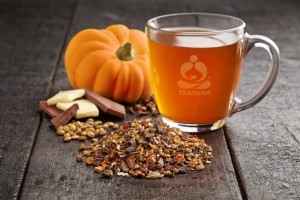 Over the past year, the Teavana team has integrated a line of Teavana hot teas, shaken iced teas and Oprah Chai in Starbucks stores across North America. The result? Tea has become Starbucks’ fastest growing in-store segment across the continent.
Over the past year, the Teavana team has integrated a line of Teavana hot teas, shaken iced teas and Oprah Chai in Starbucks stores across North America. The result? Tea has become Starbucks’ fastest growing in-store segment across the continent.
But Young-Scrivner says the real opportunity is global, the lands of tea and beyond. Teavana will be introduced in 2016 to Starbucks in China, Japan and other parts of Asia.
Bringing tea to regions with indelible tea cultures will be a real test of the concept. “When we go into tea-origin countries, we’ll go in really respecting the heritage,” Young-Scrivner says. “But we’ll not be afraid to reinvent.”
Kotha adds that any international expansion must overcome the “liability of foreignness.” In Teavana’s case, that unfamiliarity could also prove to be its greatest asset. Its target demographic is young people who care about what they consume and how it impacts the world, and who might be a bit less rigidly devoted to the old ways and flavors.
Robert Palmatier, research director of the Foster School’s Center for Sales and Marketing Strategy, says that Starbucks has proven its ability to expand markets with new twists on old tastes. “We call these product extensions, such as when Starbucks added Frappuccino to its lineup of traditional coffee drinks,” says Palmatier, a professor of marketing and the John C. Narver Endowed Professor in Business Administration. “And with so many varieties and flavors of tea, it might make for even better product extensions.”
In the same way that Starbucks convinced coffee drinkers in Taipei, Sao Paolo and Istanbul to try Frappuccino, Teavana’s epicurean blends, matcha lattes and whatever-they-come-up-with-next will be like nothing they’ve ever experienced in Shanghai, London, Tokyo and Dubai.
It comes down to exposure, to 70 million customers a week. “It’s an incredible opportunity to leverage Starbucks’ scale,” says Young-Scrivner. “If we are where Starbucks was 25 years ago, it should take us a lot less time to build the size and scale of Teavana.”
Progress and passion
Young-Scrivner has Teavana well on its way to its five-year goal of tripling Starbucks tea sales to $3 billion annually. After that, the sky’s the limit.
But Starbucks is a dynamic organization, and this fall she will transition to a new role leading the global expansion of the My Starbucks Rewards customer loyalty program.
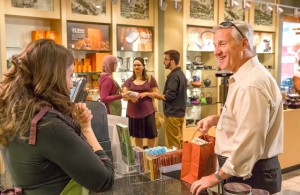 Young-Scrivner will be the first to say that Teavana is bigger than her or any other individual. But there’s no doubt she leaves an outsize legacy, a shot of inspiration, an infusion of spirit.
Young-Scrivner will be the first to say that Teavana is bigger than her or any other individual. But there’s no doubt she leaves an outsize legacy, a shot of inspiration, an infusion of spirit.
“One word comes to mind when I think about why Annie has been so successful in moving us forward,” says Robert Herring. “Passion. She has an incredible passion for tea. And she has created a passion for tea in everyone on the Teavana team.”
Starbucks’ mission is to inspire and nurture the human spirit—one person, one cup and one neighborhood at a time.
It’s personal for Young-Scrivner.
“Life is short,” she says. “I believe that people should drink more tea. Really good tea.
“And that goes for coffee, too, by the way.”
Starbucks and Foster: Partners on every level
You’d have to search pretty hard to find a program or center or event at the Foster School of Business that isn’t connected to Starbucks in some important way.
Just scratching the surface, Starbucks provides financial support to Foster’s annual Business Leadership Celebration, Global Business Case Competition, Environmental Innovation Challenge, Sales Club, U Lead, Young Executives of Color and Diversity Services.
Starbucks executives serve as expert speakers, panelists, mentors, judges and advisors at Foster. They host student visits in Seattle and abroad.
The company hosted Foster’s first “Lunch and Learn” alumni event featuring a faculty expert on an on-demand topic. It provided a challenging case for last year’s MGMT 430 capstone case competition. And it regularly provides applied strategy projects for the MBA Strategic Consulting Program.
Starbucks is also a major source of meaningful internships and careers for students. It’s a top 10 employer of Foster undergrads and a top 5 employer of MBAs.
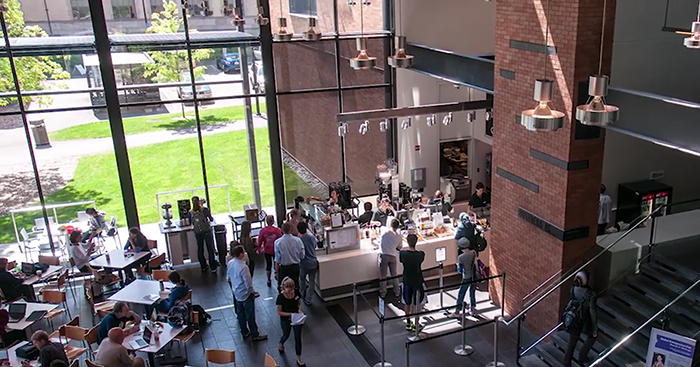
Last, but certainly not least, is the essential availability of Starbucks coffee and tea in Orin’s Place, the nerve center of PACCAR Hall that is named after former Starbucks CEO Orin Smith (BA 1965).

